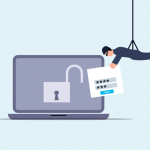“But… I’m already safe in The Cloud. I don’t need this.”
This a huge misconception. While it does add an extra level or measure of Cybersecurity, it is much more than simply backing up data to the cloud and then backing that up to yet another cloud, which it does. Cloud to Cloud backup (C2C) refers to the backup of applications that are already hosted in the cloud. The vendors you use for your cloud backup are just providing the platform. Secure storage is another matter. That should be set up by your IT support team or Managed Services Provider.
In order to understand that better, in terms of application hosting, we need to explain what a cloud is in a sentence: ‘Cloud’ is defined simply as ‘Your server somewhere else’.

Why does cloud backup to cloud?
Backing up your data to the cloud is one thing: once you place your network and all applications in the cloud, your data and network operations simply live there and backups need to be arranged. Think of it as living in a rental where the landlord fixes everything. Once you buy a house, you have a better place to live, but new arrangements need to be made for home maintenance and repair.
Once your server is in the cloud, several things happen, including:
1) Everything should work faster, depending on the quality of your internet, because it does not carry the burden of localized computing which depends primarily on the end computer’s hard drive and RAM (Random Access Memory). You will still need RAM to support internet browsing, and to a much smaller extent, working with multiple applications open – the cloud does the heavy lifting for you.
2) Rather than backing up directly from a local physical network, you are now going to need cloud to cloud backups.
3) It drastically reduces office hardware costs – you will still need workstations, but they only need to be terminals to the cloud – not self-contained storage and computing devices.
This will not relieve of the need for overall Cybersecurity, and yes, you still need IT support.
What is the cloud and how does it work?
As a longtime member in good standing of the IT Support Los Angeles Community, IT Support LA was at the forefront of instituting cloud usage for our clients. We have seen how, over the years, many companies used the cloud primarily for secure offsite data backups, and to host basic applications like email. With the surge in employees working remotely due to COVID, there has been a remarkable jump in companies hosting their entire networks and all applications to the cloud. It is safer, easier for the in-house IT support crew, IT HelpDesk, or the outsourced Managed IT Services provider to keep secure and is much more manageable in terms of Disaster Recovery.
Cloud services have massive data centers that host your data and applications. Like a warehouse filled with aisles and aisles of servers. Your applications or your emails are still running off a server just like they did at your office before the migration. So being in the cloud, just means that you are “remoting” into the application that is installed and running of another server.
Cloud backups have proven to be more reliable than local backups, but any system can fail. Backing up to multiple locations via C2C provides a critical ‘fail-safe’ redundancy for your data protection, like not ‘putting all of your apples in one basket’.
The vendor/owner of your Cloud service will maintain your remote server, maintain Cybersecurity for it, and make sure it is operational and functional for you, but they typically do NOT manipulate your data in any way. This means they do not provide data verification, check data integrity and most importantly – backup. That refers to both applications and emails. Issues like this fall within the parameters of your IT services responsibilities.
Test it!
Delete an email and wait 30 days. Then try restoring that email. Call Microsoft, Google, or whomever the email platform is provided by, and ask them for that email. Learn the truth before you lose important emails or data.
Why that is important:
Most likely any dispute, claim or lawsuit you encounter will go through a ‘discovery’ process, and that discovery process will often require the submission of all related emails and files. If deleted, you are leaving your business very vulnerable, without a good position to protect yourself against allegations from accusers ranging from vendors, customers or even terminated employees.
This can be catastrophic to your business.
Don’t Take the Chance!
Call IT Support LA or fill in the form on this page for your FREE Backup and Disaster Recovery consultation. Tell us a bit about your business and your processes, and we will give you the best options to keep your company’s data and applications secure and protected. There is no obligation and no need to ever use our Managed IT Services.
818-805-0909
Your New and Redefined IT Experience Begins with a FREE Consultation.
Give us a call or schedule online today!
Frequently Asked Questions
Q: Can you transfer from one cloud to another?
A: Yes. You are never married to the first cloud service you employ. Once you decide to move your data to a new cloud (different from cloud to cloud backups), you can go the slow ‘export’ way or you can use tools such as Mover.io, Otixo, or IFTTT. Howtogeek.com provides a great analysis HERE.
Q: How do I move my Dropbox folder to the cloud?
A: If you use Dropbox Plus, they have a simple way to do this:
1) Open File Explorer in Windows or Finder on a Mac
2) Open the Dropbox Folder
3) Right-click the folder or file you want to designate as ‘online-only’
4) Find Smart Sync and hover the mouse over it
5) Click on ‘Online-only’. Afterwards, if you also want to save it to your hard drive, click Local
Q: How do I move files to the cloud on Android?
A: This is so simple that ‘Dummies’ addresses it quite handily HERE. If it’s a company device, just have your IT services people do it.
Q: What does iCloud do exactly?
A: iCloud the umbrella term for cloud-syncing features on Apple devices. It simply backs up what you need onto Apple’s cloud.



